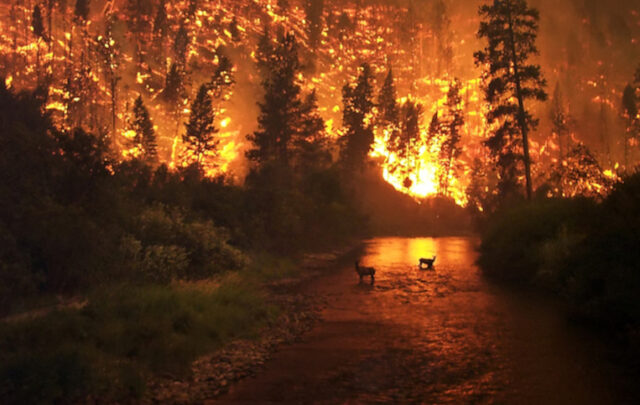
Is the Scottish government truly sparking a revolution through land reform?
We’re usually talking about communities creating commons, often in spite of government. Thanks to the valuable writing of many contributors to this movement we are bolstered by community action. The Occupy movement is a case in point. In Wellington, New Zealand, one continuation of the Occupy movement at 17 Tory Street is the result of pure citizen activism: partnerships between rugged individuals and a broad-minded property owner.
My local suburban community in Vogelmorn, Wellington has managed to take ownership of a bowling club with some administrative co-operation from local government, but certainly with no encouragement. Local politicians have lurked around the project watching it emerge, trying to decide if it’s a horse worth backing. They’ve been hedging their bets, but as we get a popular following they begin to make the right noises in public. Generally, our politicians are unreliable on this idea of communities being self-determining and responsible for their own destiny. No doubt it feels threatening to their ideas of representation.
Which is why I did a double take on hearing the Scottish government’s Cabinet Secretary for Environment, Climate Change and Land Reform, Roseanna Cunningham at the recent Community Land Scotland conference in Edinburgh. She presented the notion that government should be doing ‘what’s best for communities’, and talking in terms of ‘culture change’ required for Scottish people and the local authorities; sounding more like an activist than a senior minister.
Roseanna Cunningham from sophie jerram on Vimeo.
The Scottish Government’s aim is to have 1m acres of land in community hands by 2020. It has established a fund of £10m to assist communities to buy land whether for cities or rural sites. There’s a maximum of £1m per project so groups may have to find supplementary funds after feasibility is established. The Scottish National Party-led government has established community development agencies, enterprise advisory services, supports woodlands groups, crofting and forestry advisories. The Edinburgh conference was awash with groups and more standard legal, accounting and property professionals there to help the community buy-back which is believed to be the surest form of land access for long-term Scottish independence. It seems that years of imbalance means that access to land alone is not an adequate goal. The benefits of ownership and details on the community right to buy scheme is found on the Government’s website.
One of the more interesting, quieter discussions I heard was around required cultural change. When asked about how Scottish communities were meant to build capacity to manage these large tracts of land, Cunningham described a shift that needs to occur between local government involving communities in planning. And that community capacity can’t be bought in.
After the conference I visited Wanlockhead in Dumfries and Galloway to meet a community who have come together to buy back land around a former mining town. The Wanlockhead Community Trust have an ambition to obtain 14,000 (5665ha) acres from the Duke of Buccleuch’s 900,000 acre Queensberry Estate.
Despite being an hour from Glasgow or 90 mins from Edinburgh, Wanlockhead feels remote. You travel through small winding roads with obscure signage; there is very little in the way of visitor services. But the 200 residents enjoy the peace and quiet. They form a strong, supportive community; “none of us is here for the night life,” quips Community Trust spokesperson Mac Blewer. The Trust is made up of a ‘self-selecting’ group: those working from home and some retirees. It includes recent newcomers to the village such as the Chair, Lincoln Richford, a retired English businessman. I asked him about capacity. How is the community finding its feet to attempt such a big buy back?
“It’s a happy accident that we have people to push the group along. And I don’t have issues about work. I’m freer. People who are working sometimes have to be careful what they say. We’ve got a range of skills – business, finance, communications, campaigns, business negotiation, and people in the village like (Innkeeper) James, who is the centrepoint of the village and connects with people who might not otherwise be engaged.
“But at the moment there are no full-time jobs in the village. There is one game keeper and one shepherdess. If our children are growing up here most will have to leave unless we can find something for them to do. Most of us didn’t know anything about buyouts. We’re in the south (successful buyouts have mostly been in the Northern Isles and Highlands) and we’re dealing with the largest landowner in Scotland. We’ve had to educate ourselves and then inform the village about what it’s about.”

Wanlockhead’s former lead mining tailings
The Wanlockhead Community Trust has run several public meetings and consultations with the village. Reforestation is a top priority. There are 8000 visitors to the museum and facilities are needed for them; toilets for example, and a bunkhouse, also ideal for walkers and mountain bikers. There are also campers in the Mennock pass and the community sees the potential to support this tourism. A ski club is open but lack of land security means development is stalled. “We could create a winter resort centre for the south of Scotland”, says Lincoln. “Skiing and curling used to be a big thing.”
Several members of the Trust recently visited the Isle of Harris to see how community ownership – including new affordable housing – has worked out. On Harris, a recycling centre and several carefully sited wind turbines have generated nine jobs and substantial income for that community. Lincoln is hugely positive “We’ve had guidance all the way. The potential of this is massive. This is a quiet revolution, bringing power to communities.”
Although meetings with the land owner are not frequent, the Duke’s Estate is engaged. “You have to applaud him for being one of the first owners to register his land holdings” (on the digital land registry) says Lincoln. “The question is what he’s prepared to sell. Because just the (former mining) village is not viable. We need to organise the projects and make it sustainable. We’re hoping to do this in an open and friendly way. We don’t want this to be a war”.

Lincoln Richford, Wanlock Community Trust Chair leads the buy-back
Can a revolution be led by government? It can, it seems if it’s resisting oppression from centuries of cultural habits of aristocratic and foreign land owners. Consciousness-raising around the movement has, however, dated back decades. The 1973 play The Cheviot, the Stag and the Black Black Oil by John McGrath is largely attributed with bringing about awareness of the systematic alienation of the Scottish people from their land. Based on solid historical research, it was performed in the style of a ceilidh – a festive evening of singing and dancing, and toured around small town halls, inciting a fervour of awareness about the tactics of the ruling class who enrolled support of the church, the law and the military to remove people from their land from mid-18th Century. Drawing a parallel between the Highland Clearances with the extraction of the wealth generated by oil discoveries in the North Sea, its Marxist undertones (and lack of awareness around fossil fuel climate impacts) now seem somewhat anachronistic – but the play is still hugely impactful.

The Cheviot, the Stag and Black Black Oil (2016) at the Royal Lyceum Theatre, Edinburgh. Photo credit: Tommy Ga-Ken Wan.
With only 432 people still owning half of Scotland, there is still more work to be done on shifting the feudal culture of Cunningham’s imagined communities. The writing and research of Andy Wightman, a dedicated land reformer has kept the fires burning. Andy is now a Green Party MSP (Member of the Scottish Parliament), but is a humble politician. He spent the day at the Land Reform conference quietly taking notes and sending tweets then found time to show some of us the new Scottish Parliament.
By Saturday night, I’m listening to folk musicians who have assembled in the Wanlockhead Inn. The people playing are passionate, unassuming; warm but shy with strangers. A Glaswegian concurs about Scottish confidence. “You can’t have centuries of being told you’re worthless without it going in at some level. It’s like shit; if you throw a lot of it some will stick.”
Over warm beer and ballads, she talks about the consciousness raised since the 2014 independence referendum. “We call it the butterfly revolution”, she says. “Because there are always more of us. You can’t shoot us down. And, tonight, they’ve come from all over – to sing folk music, enjoy each other’s company, and to celebrate. They’re here to support the local community. So I say let’s keep it going, let’s get things moving, let’s take back our life, let’s take back our country – and let’s take back our land.”
I came to Scotland expecting to understand how land reform was being used to empower communities; and to understand the processes of commoning. What I had failed to understand was the scale of the inequality of the existing regime. The legislative process of government is absolutely crucial. Already 75% of people in the the Western Isles are now living on community-owned land. Highlands and Islands Enterprise’s site includes maps and interviews which give a great idea of progress. With another 500,000 acres of land still to go to reach the government’s target, there’s no better time to be a community in search of control of your own fell or dale.





